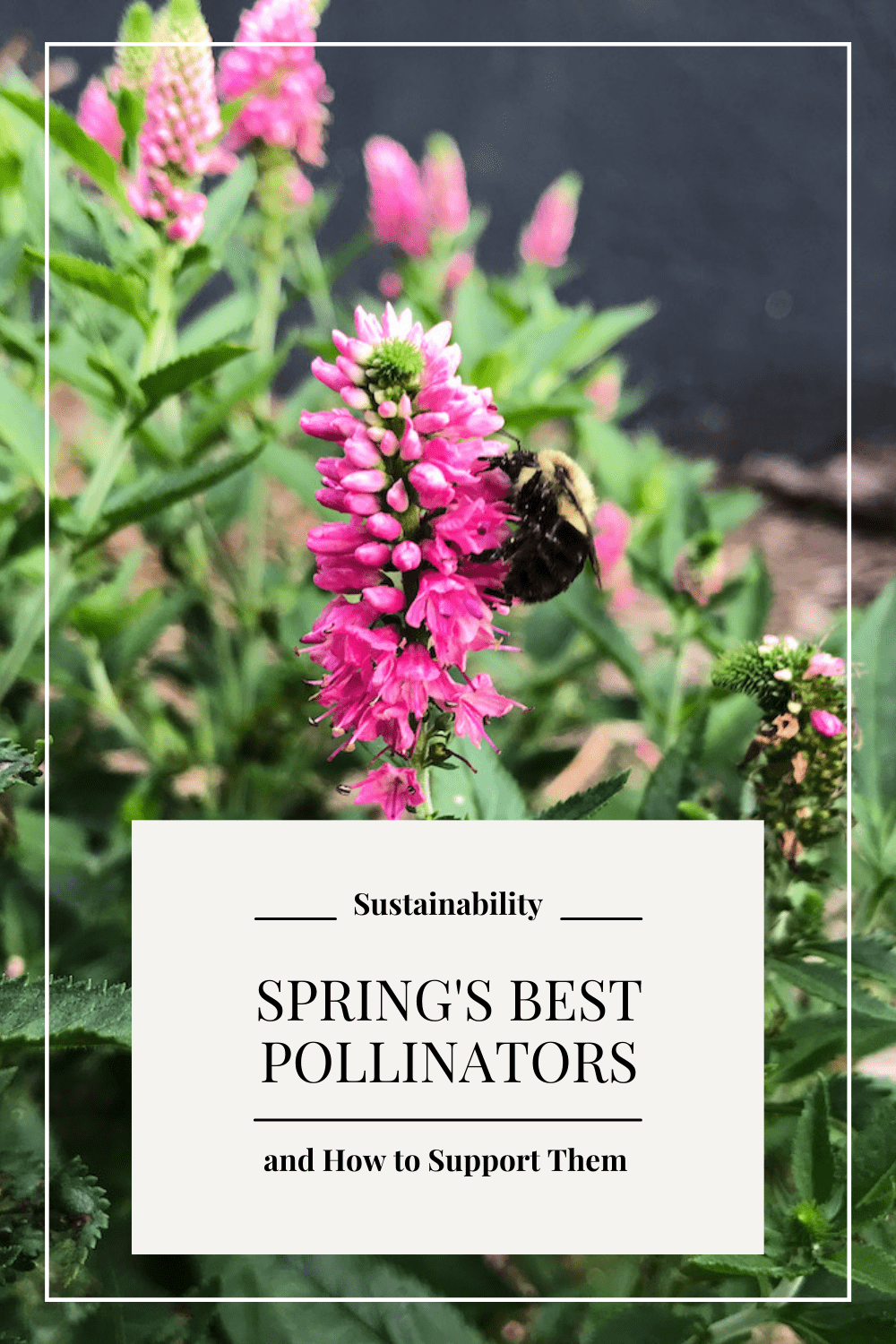
Spring’s Best Pollinators And How To Support Them
Spring brings a lot of my favorite things. My favorite things of all are the pollinators that begin to visit our homestead! Pollinators are the heartbeat of any homestead. They keep the garden growing, the flowers blooming, and the homesteader happy. Today we are going to talk about Spring’s best pollinators and how to support them!
What is a pollinator?
First let’s clarify what a pollinator is. A pollinator is any animal or insect that aids in the movement of pollen from the male part of the flower to female part of the flower. That is they aid in the reproduction cycle of the plant.
Movement of pollen must occur before the plant can produce and reproduce. Without pollination, plants cannot produce seeds, fruit, or new plant. That is why pollinators are so important!
Without them we wouldn’t have a bountiful harvest unless we did all the work ourselves by carefully hand pollinating each individual flower. That doesn’t sound like fun to me.
Pollinators aren’t just helping to put food on your table, but on the tables of the world!
Pollinators support the majority of plants throughout the world, which in turn makes them a critical part of many food webs. Their ability to cross pollinate creates genetic diversity giving us stronger more adaptable plants.
Without them, where would the world be?
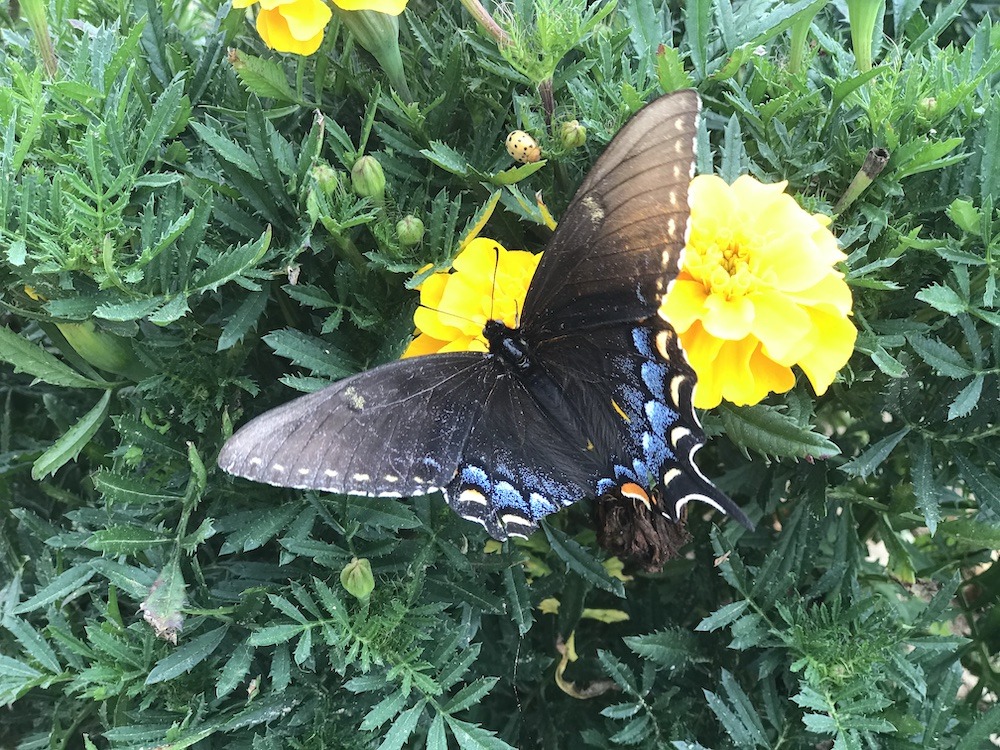
What are the most common types of pollinators?
When I think of pollinators, my mind is immediately taken to visions of butterflies and honey bees. These beautiful pollinators not only make your garden beautiful with their ability to pollinate, but also with their mere presence.
Is there anything more magical than a beautiful butterfly landing softly on a flower petal, or the music from a cherry tree in full blossom buzzing with life?
Another common and beautiful pollinator is the hummingbird. I get so excited every year when I begin to see these little sprites flitting around my garden, bouncing flower to flower.
Pollinators your didn’t know were pollinators!
When you think of pollinators, you likely think of the ones we just mentioned. I know for me, bees are the number one thing I think of. But there are so many more pollinators out there that you likely didn’t even realize were pollinators!
Bats for one are not only great for keeping the pesky mosquito population down on your farm, but they are also a great source of pollination!
Lizards can also be a great unusual pollinator. Along with other night time pollinators like moths, fireflies, and even mice!
Even birds can be pollinators and seed spreaders!
It is amazing how animals and plants work in harmony to sustain one another.
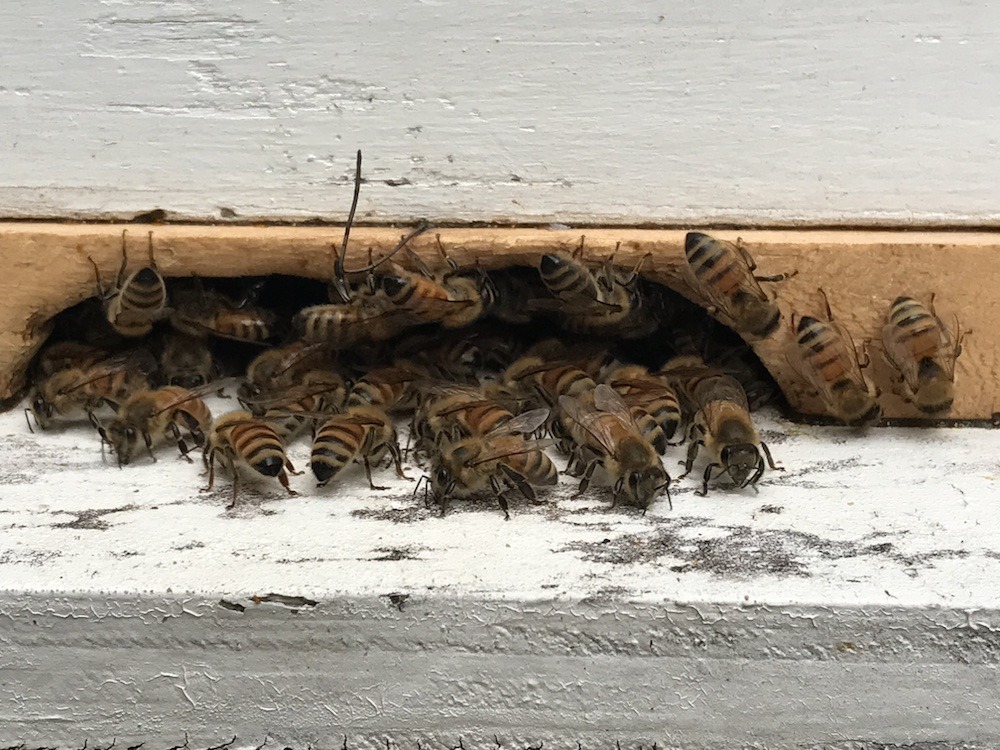
What is the most efficient pollinator?
While there are so many different types of pollinators out there, it has been found that bees are the most efficient of them all. A single bee colony can pollinate up to three million flowers a day! That is insane!
These little buzzy workers not only pollinate our gardens, but they also create some tasty treats with all their buzzing around.
The hard work of these bees results in the pollination of around 70 of the almost 100 crops grown in the world feeding over 90% of the world’s population!
That is a tall order for such little bees.
How do pollinators help my homestead?
Pollinators not only help your crops be more fruitful, remember without pollination your plants don’t bare fruit or seed, but they also are beautiful to watch.
Pollinators like bees also supply a homestead with other resources as well such as honey, bees wax, and royal jelly. These resources are used in cooking and for health and wellness.
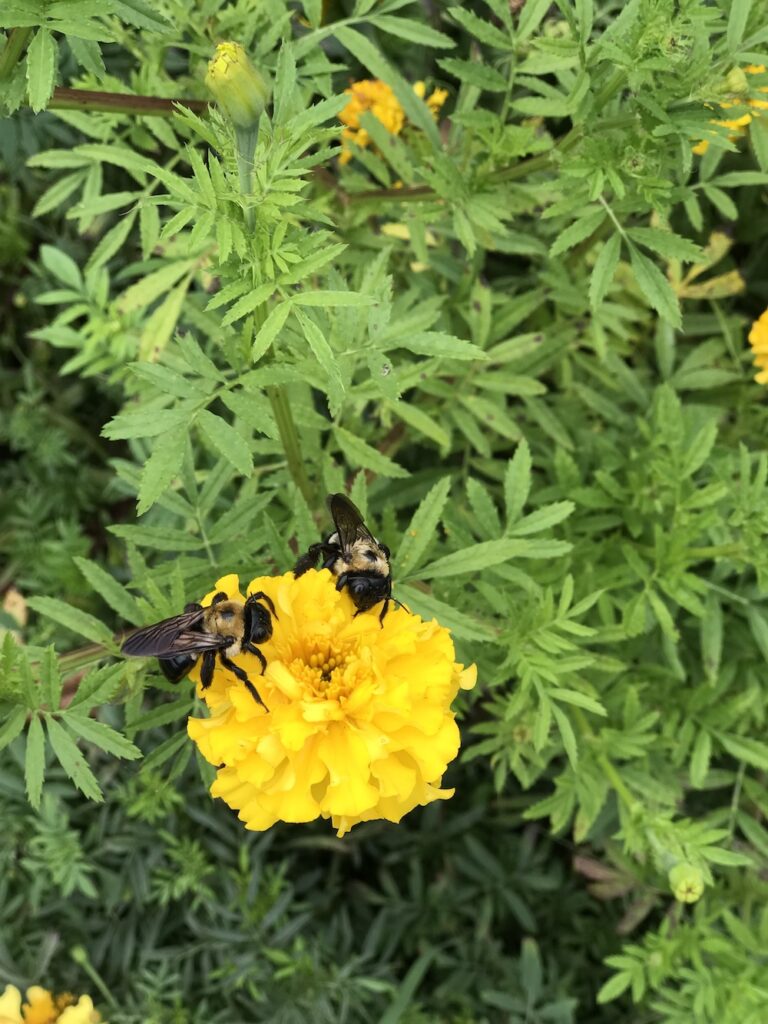
Threats to Pollinators
Around the world the population of pollinators is in decline. According to Penn State’s Department of Entomology, pollinator declines have been around 30% since 2006, with some years being higher!
What is causing this decline?
Habitat Loss
The largest threat to pollinators currently is habitat loss. As infrastructure continues to grow for humans, habitats are lost for not only pollinators but all animals. This loss of habitat has decreased pollinator numbers around the world. and upset the natural order of the animal kingdom.
This decrease in habitat not only affects where these pollinators find food, but also where they live, breed, and overwinter.
Non Native Plants
Non-Native plants are also a threat to pollinator numbers as many of these plants are aggressive and take over native plants that allow our pollinators to survive. Non-native plants choke out the native species within an area which reduces the availability of life sustaining pollen and nectar from native plants.
Invasive species of plants can have an overall detrimental impact on the food chain of these pollinators.
Chemicals and Pesticides
Pollinators like honey bees are introduced to a wide range of chemicals both in the wild and unfortunately at the hive. These chemicals can weaken a hive and leave it susceptible to disease and vulnerable to attack.
While Beekeeper applied chemicals are meant to protect the hive from mites, infections, and other health issues, over use can compromise bee health.
Bees can also bring chemicals and pesticides back to the hive through pollen which can also be detrimental to the colony.
How can you help?
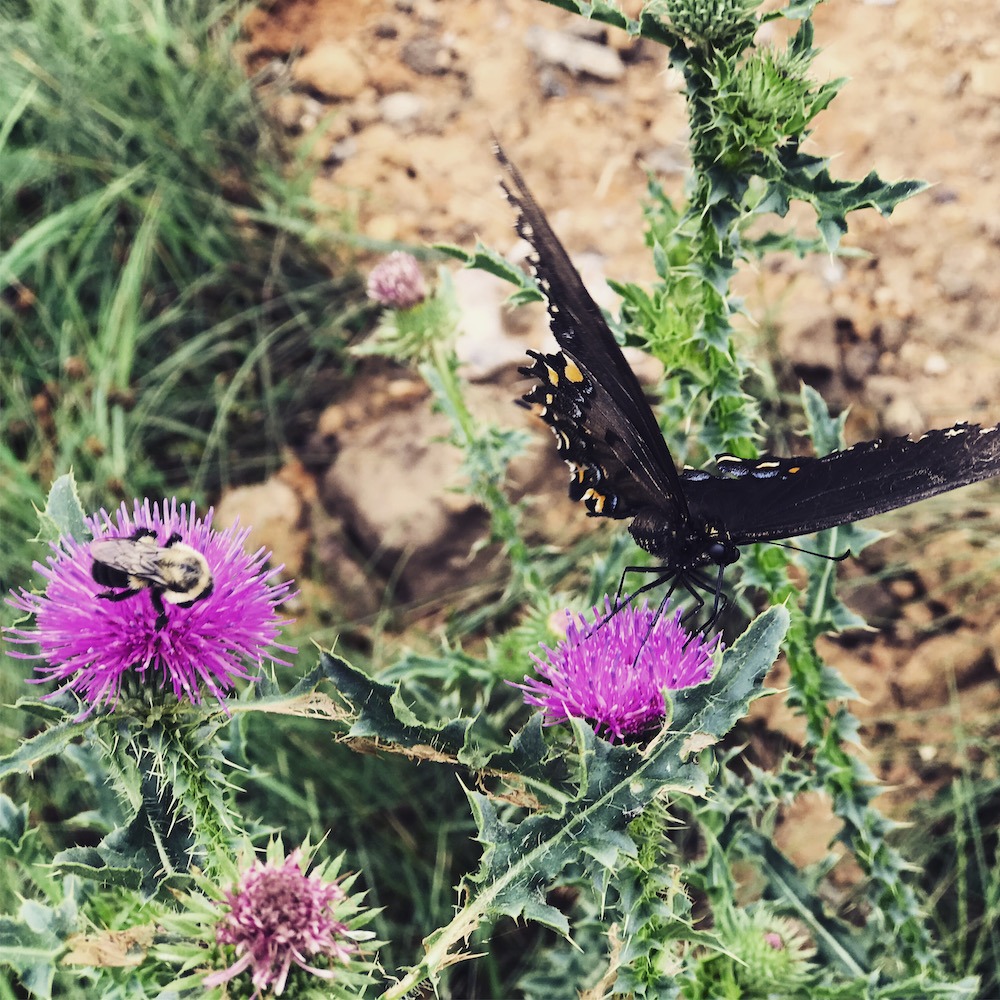
How can you help pollinators?
I hope you are feeling that tug at your heart strings that something needs to change and we need to help our busy bee friends! Fortunately even a little helps. If we all pitch in a little bit, we make it a lot better for all pollinators.
Bring Back Bee Homes
Whether you aspire to be a beekeeper or not, there are lots of ways to help support our flying friends. The first way to to bring back their homes.
Regardless of where you are, you can help by aiding in planting native plants or allowing portions of your land to go back native. This re-nativization (not a word in real life), will give our pollinators shelter, a place to raise their young, and food supply. Everything they need to be successful.
It doesn’t have to be a lot! Remember every little bit helps. Even if you just plant a container garden of native plants and put it on your porch or balcony, you are helping to balance out the world we have taken from them.
My dream is to create pollinator sanctuaries around our homestead to help support our local Virginia pollinators by allowing our land to go back to its native roots. We will aid in the planting of native plants and removal of non-native species that aggressively take over pollinator living space. I can’t wait to show you all the progress this project takes over the course of the next few years so be sure to follow us on Instagram to keep up!
Reduce Chemical Exposure
Many beekeepers over the years have been proactive with hive health by applying chemical treatments before disease has struck their hive. This can be costly to our keepers and our bees.
If you are a beekeeper begin your research on Integrated Pest Management. If you are not a bee keeper but still want to help, be thoughtful around the types of chemicals you use to protect plants from insects. Remember that pollinators are often insects too so while you may be saving your crops this year from munching, long term you may be hurting future crops due to lack of pollination!
Protecting pollinators is protecting our future food chain!
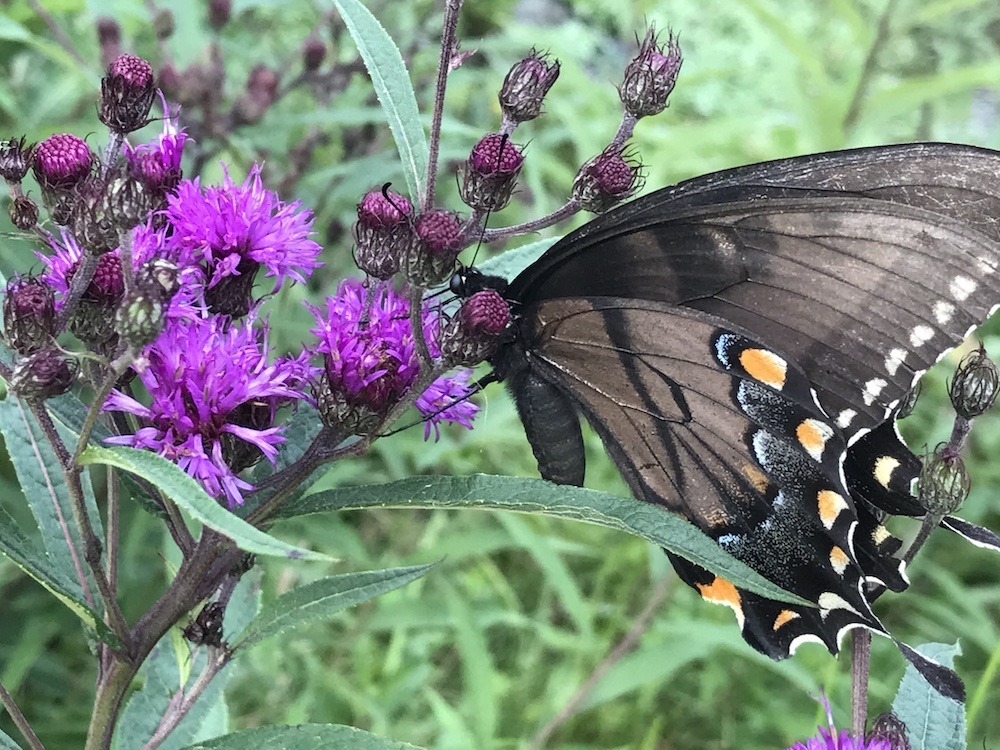
Resources to help support pollinators
The best thing we can do is to educate ourselves and others on the importance of pollinators. There are a ton of great initiatives out there to help our pollinators. Check out these resources to learn more about pollinators and how you can help them.
EQIP
EQIP is a resource for those wanting to take the land back to native and helps to provide funding to make this happen for pollinators and farmers. This funded initiative is a great way to conserve the habitat of our pollinators
Pollinator.org
This program offers educational opportunities as well as potential to volunteer depending on your area. It is a great resource to check out.
Honeybeesuite.com
This site is a great resource to learn more about bees and bee keeping. If you are looking to understand the bee better, this is the place to do it!
Build a Better Tomorrow
I hope you have found some interesting facts and learned more about what you can do to protect our pollinator population.
We would love to hear from you! Leave us a comment below and let us know how you help support the pollinators in your community!
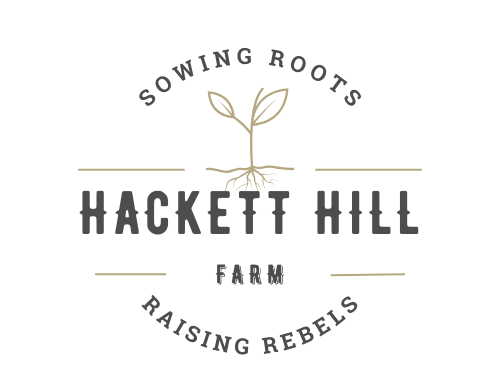


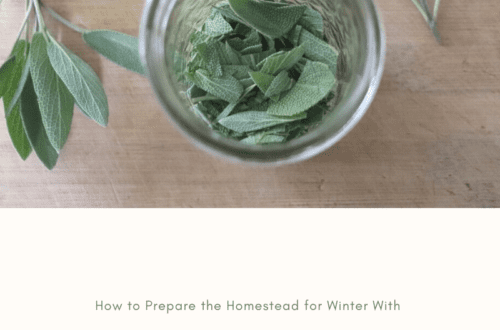
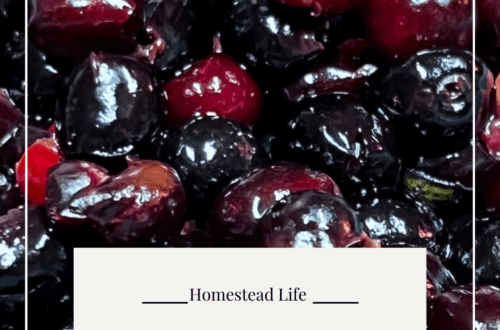
7 Comments
Fadima Mooneira
Cool tips to help polinators. They bring a lot of benefits to us. So we must take care of them. Thank you for sharing.
Caroline
It is so heartbreaking that the number of pollinators is declining, especially with the government allowing the use of these harmful pesticides. I learnt about neonicotinoids a few years ago in my environmental science A-level, and since then I have wanted to plant as many flowers as possible!
hacketthillfarm
It really is heartbreaking. It always brings me joy to see them moving about our homestead, but makes me so sad to think that one day they may not be there.
Jaya Avendel
Love this timely spring post! Our fruit trees are beginning to bloom and are abuzz with ever so many bees. It is a real joy to see the spring buds and flowers attracting pollinators, and we always do our best to plant flowers for them throughout the summer. 🙂
hacketthillfarm
I love this! Every little bit we can do helps!
Keep+Calm+&+Drink+Coffee
A very interesting reading!
Thank You so much!
For instance I didn’t know that also lizards or mosquitoes are pollinators.
Molly | Transatlantic Notes
This is the perfect reminder to take care of nature and to fully understand the importance of pollinators — thanks for this! I will do my bit!